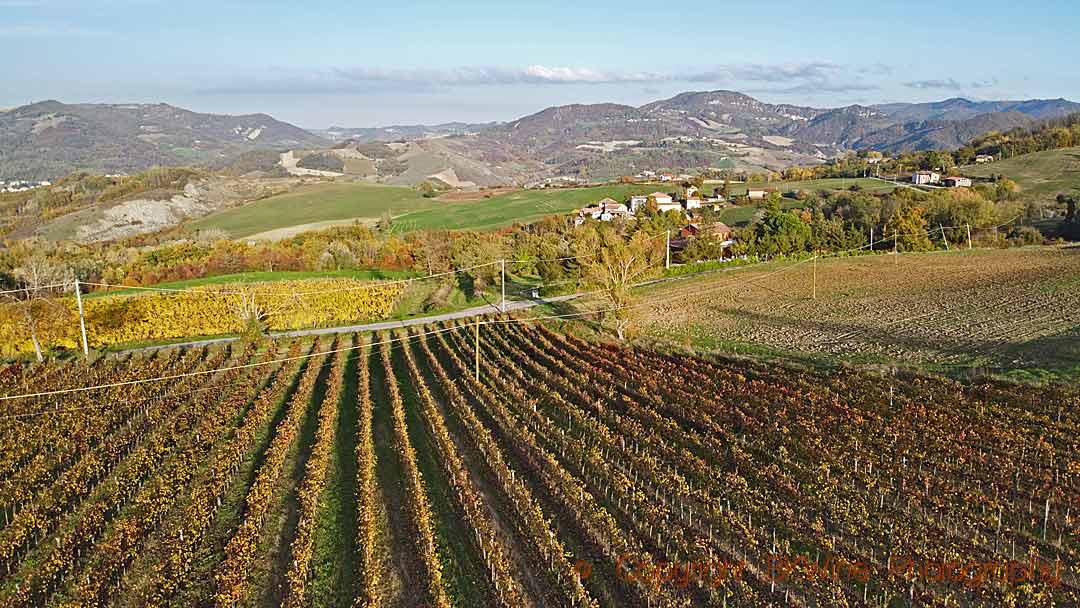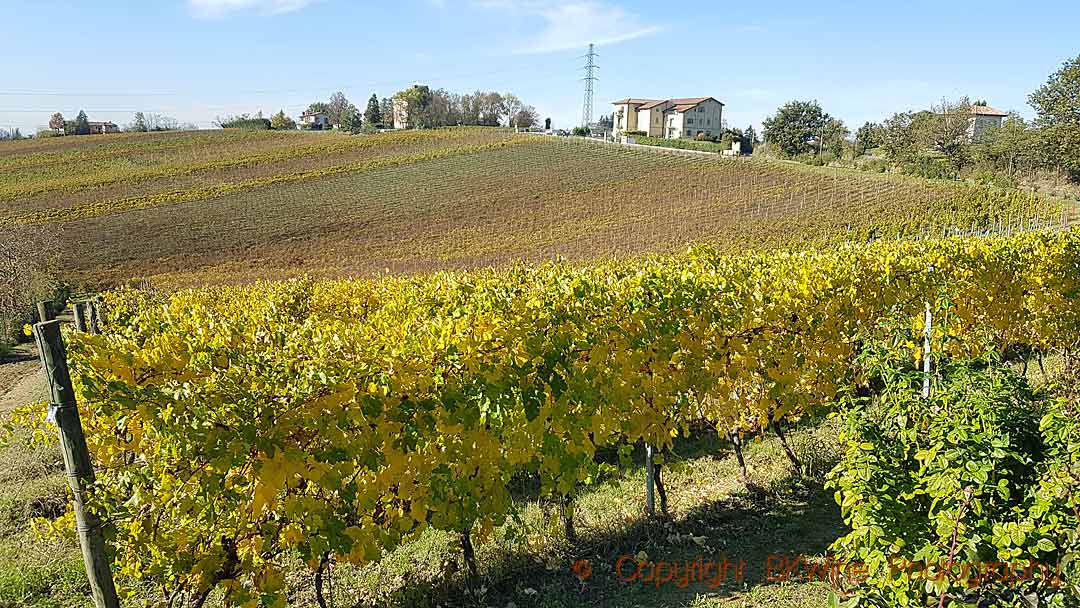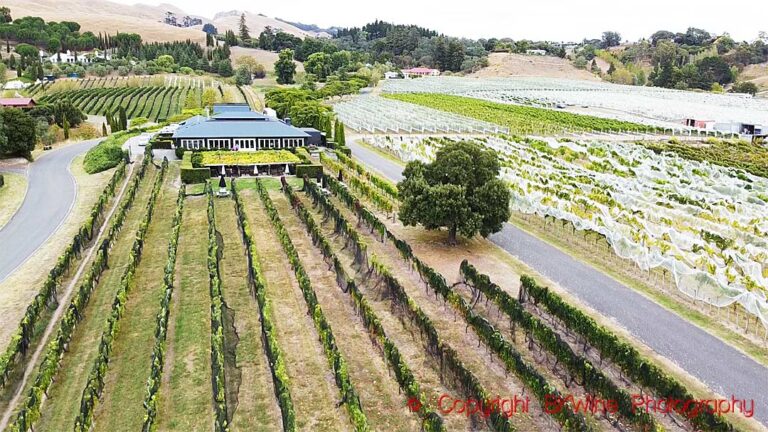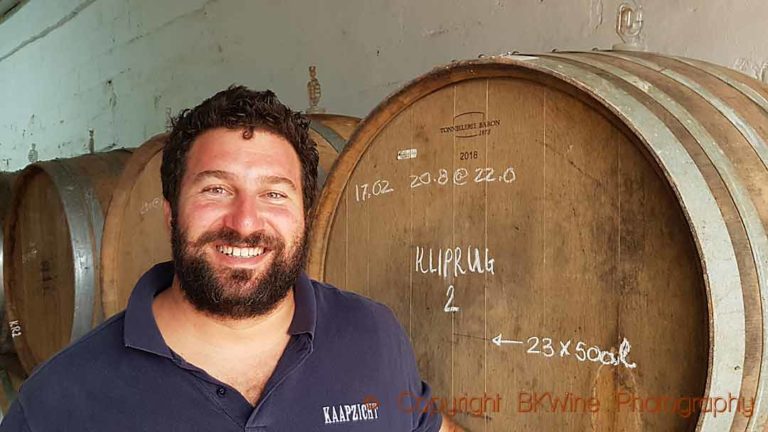Not so long ago, we discovered timorasso, an Italian white grape variety in Piedmont. Since then, we have tasted a fair number of timorasso wines, most recently from Cantine Bottazzi. We believe that this grape is among the most exciting white varieties that exist in Italy and indeed in the world. The timorasso wines from DOC Colli Tortonesi in Piedmont are definitely among the best white wines of Italy.
Last century (which is not that long ago) timorasso was on the verge of extinction, having all but disappeared during the phylloxera crises. But luckily, it resurfaced. A revival began in the early 1990s. And now Piedmont has 175 hectares of this grape. Admittedly this is not a lot, but the surface is growing, and we hope to see more of this grape in the future as we like its combination of high, refreshing acidity and a rich, mouth-filling character. The name of the grape variety is timorasso but the wines are often also called Derthona, with is a reference to the village of Tortona and the Colli Tortonesi appellation.
Which will be the first region outside the Piedmont to plant it?
This is a longer version of an article published on Forbes.com.
Read what we have written previously about timorasso here: A Piedmont wine treasure that was almost lost, but was saved from extinction: Timorasso | Per on Forbes.
Recently we tasted timorasso wines from a winery called Cantine Bottazzi. The owner and winemaker, Carlo Lorenzo Bottazzi, also shared with us some of his winemaking secrets, explaining why his wines turn out like they do.
“We believe”, he says, “that timorasso, as nebbiolo from Barolo, deserve a winemaking with a lot of extraction from the skins. I decided to apply a winemaking method to extract the utmost from the grape, namely skin contact.”
Producers of timorasso wines don’t usually use this method, he says. Overall, skin contact is pretty unusual as a white winemaking technique. Usually, you press the grapes and remove the skins more or less immediately and the ferment the juice without skins (as opposed to red wine, that is fermented with the skins). However, skin contact has come into vogue in recent years, thanks to the success of orange wines. (Orange wines are a type of white wine with a dark, sometimes orange-tinted colour. They get their unusually dark colour from the prolonged skin contact.)
But he points out that it is essential to avoid the (in his opinion) typical downsides of using skin contact in the vinification. He mentions a flat nose, similarity among different grape varieties, and a dark colour as some of the effects he wants to avoid. He manages to avoid these pitfalls. Experts tasting his wines blind cannot spot the skin contact method, he says Carlos Lorenzo, but “they are impressed by the power of all elements.”
And we are impressed as well. There is an incredible richness and concentration in his wines; they are powerful, intense, but still very fresh. And totally dry.
Timorasso needs time to develop, says Lorenzo. “Wines from timorasso have great ageing potential. I usually point out that it is not correct to say that timorasso can age a long time; instead, I say it has to age a long time to achieve a perfect shape and harmony and very long persistence in the finish.”
Keeping the wines for 2-3 years before selling them cost money, of course. But for him, it is imperative.
His wines stay for a minimum of two years in tank. The wines will ripen, and it also means that he seldom needs to filter the wines thanks to the slow, natural sedimentation. He uses only the indigenous yeast for the fermentation and adds very little sulphur during the vinification process.
He suggests drinking the wines slightly chilled but not too cold due to the tannins from the skin contact. And don’t serve them as an aperitif. These are wines for food. And as they are powerful and full-bodied, they go with a whole range of dishes and indeed not only fish and seafood. Lorenzo suggests spicy food, and, of course, they go brilliantly with cheese.
Tasting two Cantine Bottazzi wines
Timorasso 2016, Monterosso di Bottazzi, Colli Tortonesi, Cantine Bottazzi, Piedmont
Intense, concentrated, full-bodied, bone dry, with ripe yellow fruit, citrus and fresh acidity. I was surprised to see that the alcohol level is 15%, unusually high for white wine. But it didn’t bother me at all. The wine is delicious. It ferments and ages in stainless steel tanks. (~25 euro)
Italo Timorasso 2016, Colli Tortonesi, Cantine Bottazzi, Piedmont
Italo is the cru of the estate, from their best vineyard. The wine ferments and ages in cement tanks. There’s a lovely and vibrant acidity; it is incredibly rich and intense, there are notes of honey, and at the same time, it is crispy and dry. The nose is discreet, but just wait until you take your first sip. (~45 euro)
If you have not yet discovered timorasso, then you have a great experience to look forward to. Try the Bottazzi wines or any other timorasso wine that you can find, often also called Derthona.













